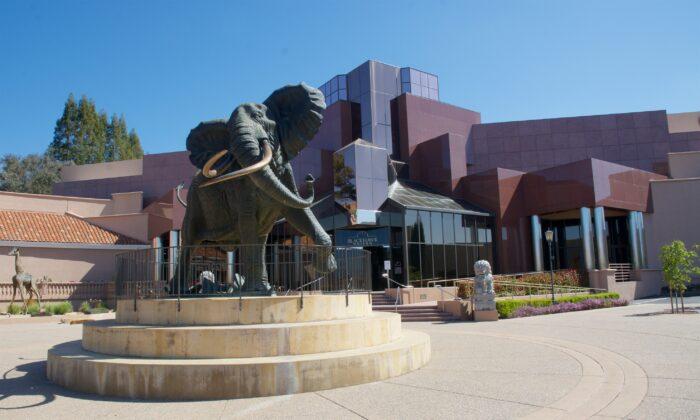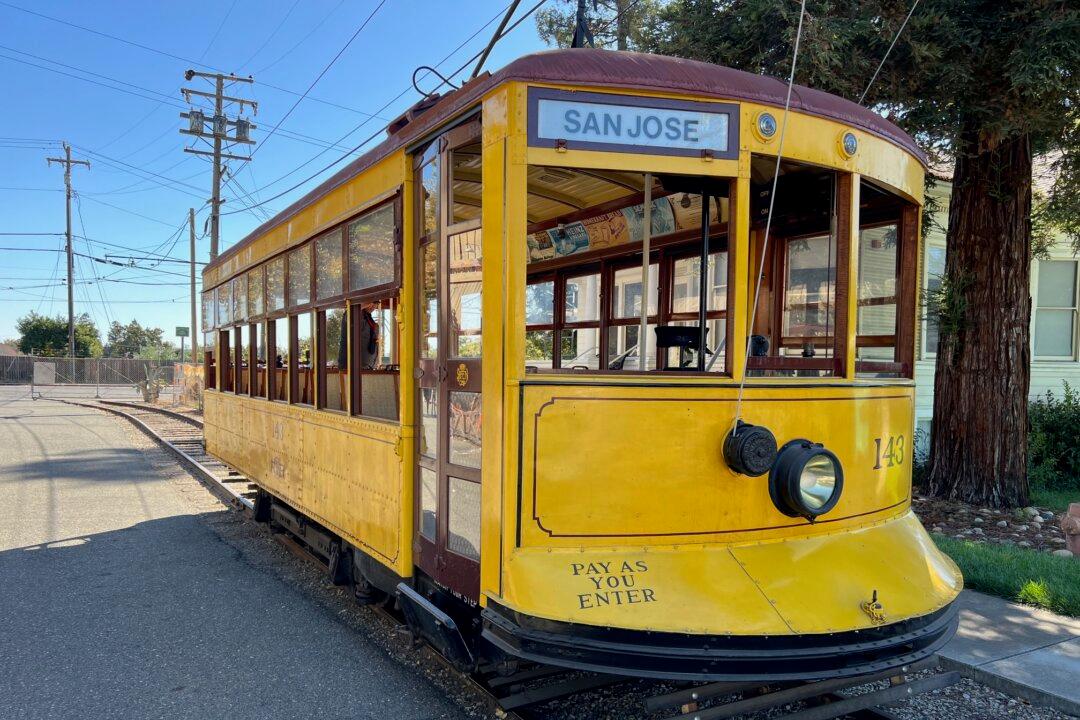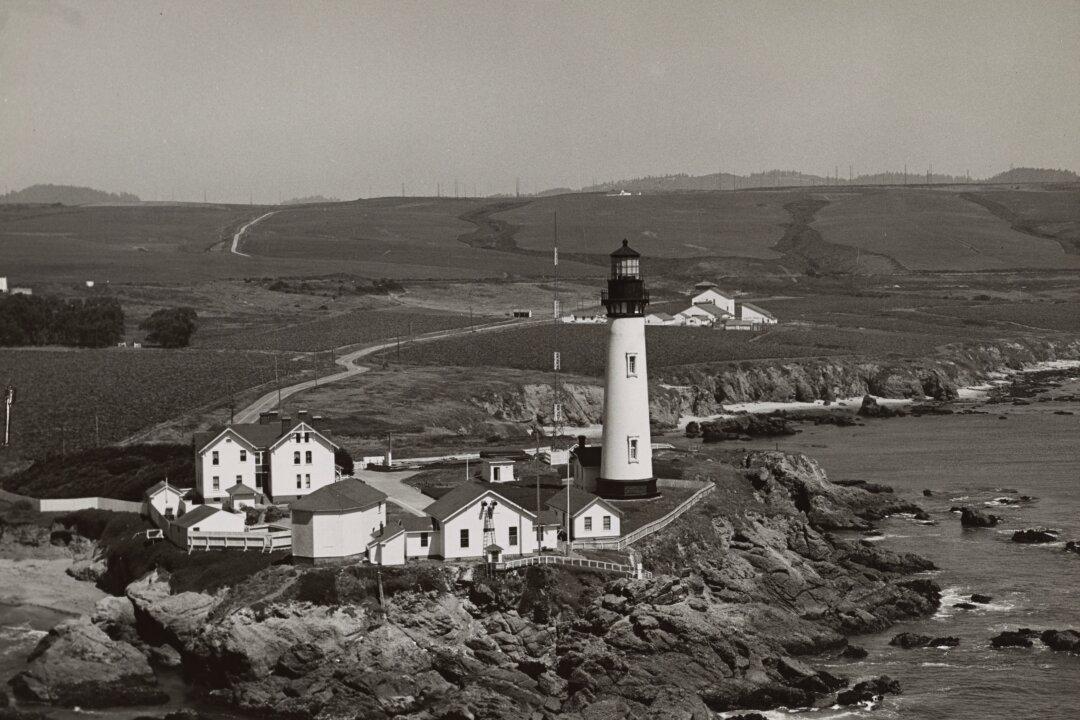A world of wonders awaits at the Blackhawk Museum in Danville, California. Five galleries, each more compelling than the last, entice visitors to stay and marvel.
The Classic Car Collection
The Blackhawk Museum opened in September 1988 with the Classic Car Collection. Co-founders Ken Behring and Don Williams designed it to showcase the automobile as an art form.As I walked through the gallery, there was no doubt in my mind that they succeeded.

Over 50 cars from six different countries, featuring a range of over 130 years from oldest to newest, are displayed in a specially built room. The tiled floor and the room’s lighting system highlight the polished chrome and colors of each car.
An advanced HVAC filtration system removes all traces of dust. You’ve never seen cars this shiny and beautiful.

The Classic Car exhibit includes some manufacturers that are still in business; but others, like the Delahaye automobiles and the Cords, Packards, and Duesenbergs, went out of business decades ago.


The American-made Duesenberg automobile was popular among celebrities in the 1930s. It had a limited production, was one of the most expensive cars of its time, and could be custom-built to the buyer’s specifications.
While most Model A Fords cost less than $500, the Duesenberg cost around $7500 just for the chassis (load-bearing part of the frame), car frame, and engine. Add in the custom body work, and the final price could be as high as $20,000 (around $450,000 today).

According to long-time museum volunteer Brad Hock, who supplied much of the above information, the Duesenberg’s main claim to fame was its engine. In the 1930s, the typical car engine had a horsepower of 120–140 hp. The Duesenberg had a horsepower of 250 hp.
Art of Africa
As difficult as it might be to tear yourself away from the Classic Car Collection, other galleries await, such as the Art of Africa Exhibit.Unlike other museums that might display ancient African artifacts, the Blackhawk museum chose to showcase not only original artifacts, but also contemporary works of art. Much of the art was made by African artists who were trained in methods passed down from father to son.
The result is a gallery brimming with amazing traditional art.

Three main displays include Makonde wooden sculptures that were carved by artisans originally from Mozambique, but now living in Tanzania; ceremonial masks that express religious and spiritual beliefs; and musical instruments that are used to celebrate various rites of daily life. Percussive music plays in the background, fully immersing the visitor in the sounds of sub-Saharan African culture.

Into China
The Into China exhibit showcases beautiful works of art and authentic reproductions that are rarely found outside China.

The Terracotta Warriors
Perhaps the most surprising display is the wonderful collection of authentic replicas of original terracotta warriors from Lishan, near the city of Xi’an in China’s Shaanxi Province.
In 1974, farmers discovered some of the terracotta warriors while they were digging a well. Subsequent excavations by archaeologists revealed that the warriors—8,000 in all—were located in a huge underground tomb dating from 221 B.C. and belonging to Qin Shi Huangdi, the first emperor of China.
A Scale Model of the Forbidden City
Within the Into China exhibit is a wooden 19-by-23-foot scale model of the Forbidden City in Beijing.Construction on the original Forbidden City was begun in 1406 on the orders of Yongel, the emperor of the Ming Dynasty. Entrance to the Forbidden City was barred to most of the emperor’s subjects.
Today, the Forbidden City is a world heritage site that can be visited by tourists, or you can visit the Blackhawk Museum to see its detailed scale model.

Spirit of the Old West
The Spirit of the Old West exhibit tells the story of both Native Americans and western settlers of the American West. The exhibit includes authentic Native American artifacts as well as tools and objects once owned by frontier settlers.Detailed dioramas and thousands of miniatures by collector Jerry Fick of Cody, Wyoming, are also on display throughout the gallery.
The Spirit of the Old West is a popular destination for children on field trips. Many of the second- and third-grade students are learning about the old West from textbooks. However, as volunteer Brad Hock said, “When you see a teepee ... it’s a lot better than reading about it in a textbook.”

World of Nature
Visitors enter the World of Nature through a small upstairs gallery representing the undersea world, before heading downstairs to view large dioramas of African and Australian wildlife.In the upper part of the exhibit, they feel like they are in a fantastic undersea world. Shifting lights on a blue background mimic sunlight streaming through the water. Mounted sea creatures engage the eye while a computer screen beckons people to learn more about individual species.

Below, visitors can hear ambient recordings of the sounds of nature from Africa and Australia. More than 600 species are displayed in realistic settings. It is truly a marvelous exhibit.

For More Information
The Blackhawk Museum is open to the public Friday through Sunday, from 10 a.m. to 5 p.m. During the week, they offer school field trips and private tours.





